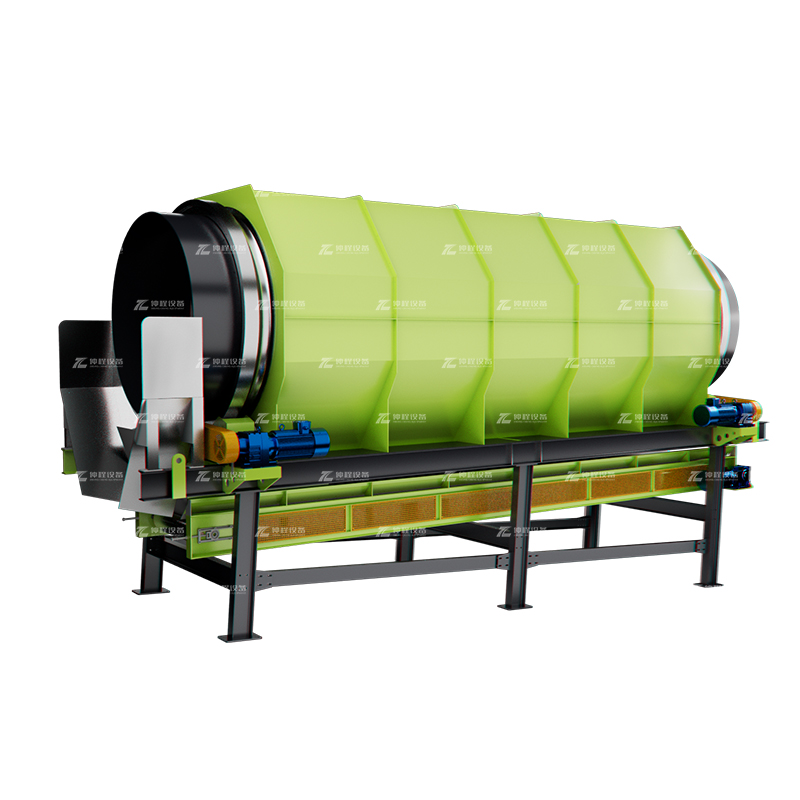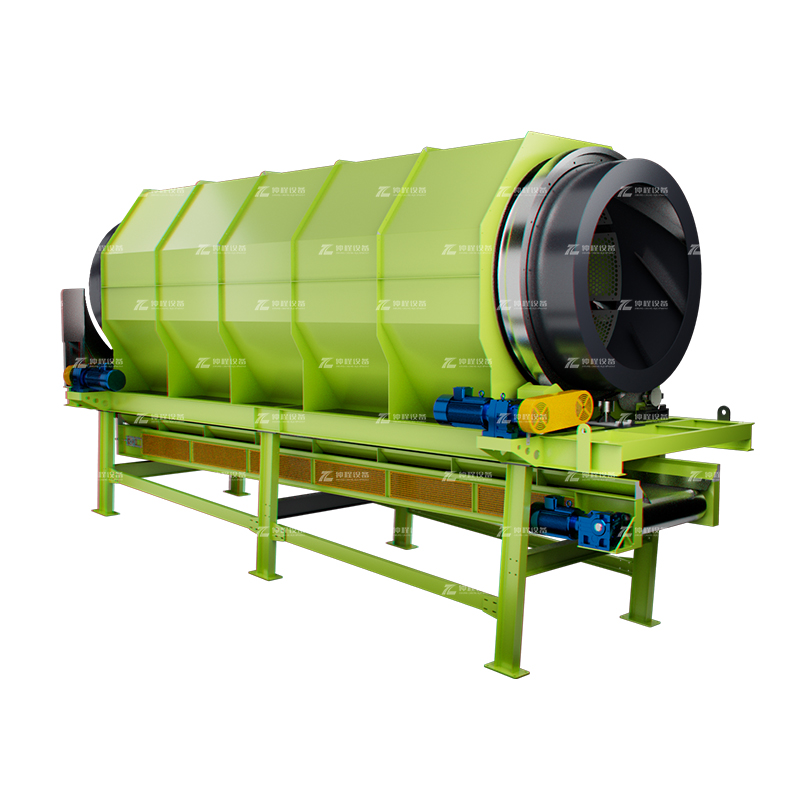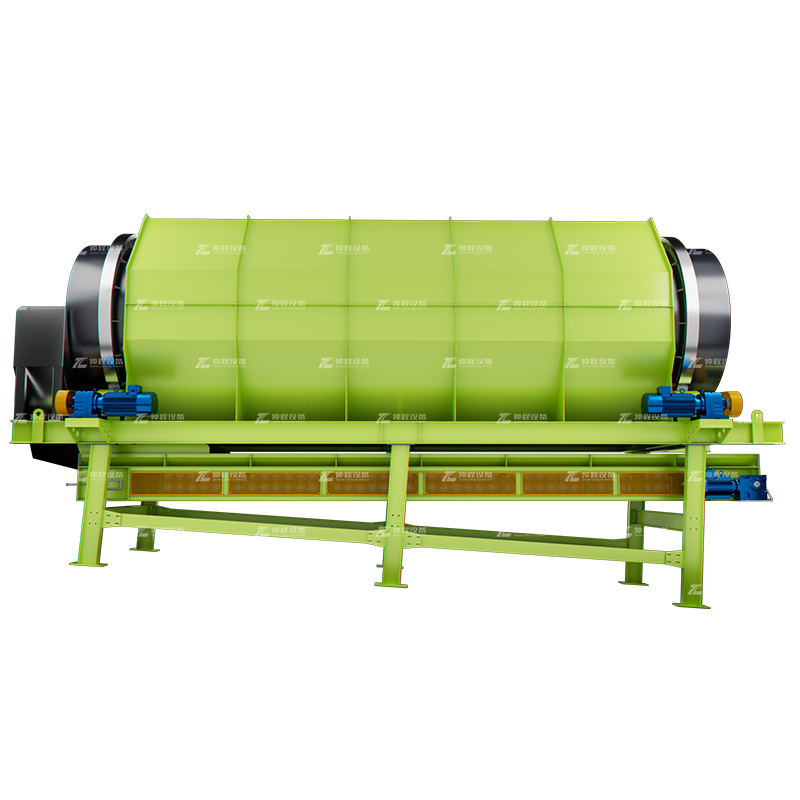garbage sorter machine:trommel screen
As the global population continues to grow, so does the volume of waste generated by households, industries, and commercial activities. Effective waste management has become a critical concern for environmental sustainability, and at the heart of this effort are advanced garbage sorting machines. Among the various technologies used in these machines, the trommel screen plays a pivotal role. This article delves into the workings, benefits, and applications of trommel screens in garbage sorting machines.
Understanding the Trommel Screen
A trommel screen, also known as a rotary screen, is a mechanical screening machine used to separate materials by size. It consists of a cylindrical drum that is perforated with holes or slots of varying sizes. As the drum rotates, materials are fed into the drum, and the smaller particles fall through the holes while the larger ones are carried to the end of the drum.
In the context of garbage sorting, the trommel screen is designed to separate waste materials based on size. The separation process is crucial because it allows for the efficient sorting of different types of waste, such as organic matter, plastics, metals, and glass. The sorted materials can then be further processed, recycled, or disposed of appropriately.

How Trommel Screens Work
The operation of a trommel screen is relatively simple yet highly effective. The drum rotates at a predefined speed, causing the waste materials inside to tumble and roll. This tumbling action ensures that the materials are exposed to the perforations on the drum's surface. As the materials move through the drum, smaller particles, such as sand, soil, or small pieces of organic waste, pass through the holes, while larger items, like plastic bottles or metal cans, continue to the drum's end.
The trommel screen can be equipped with different sections of varying hole sizes, allowing for the separation of materials into multiple size categories. For instance, a single trommel screen may separate waste into fine, medium, and large fractions, each of which can be handled differently in subsequent processing stages.
Advantages of Trommel Screens in Garbage Sorting
Efficiency in Separation: Trommel screens are highly efficient at separating materials by size, which is essential for effective waste sorting. This efficiency ensures that recyclable materials are not mixed with non-recyclables, reducing contamination and increasing the quality of the sorted output.
Versatility: Trommel screens can handle a wide range of materials, from fine particles to large debris. This versatility makes them suitable for various waste streams, including municipal solid waste, construction and demolition debris, and industrial waste.
Low Operating Costs: Trommel screens are generally low-maintenance machines with minimal operational costs. The simple design and robust construction contribute to their durability, reducing the need for frequent repairs or replacements.
Customizability: Trommel screens can be customized to suit specific waste sorting requirements. This includes adjusting the size and shape of the perforations, the length of the drum, and the speed of rotation, allowing for precise control over the sorting process.
Environmental Benefits: By efficiently sorting waste materials, trommel screens help reduce the amount of waste sent to landfills, promote recycling, and contribute to resource conservation. This, in turn, helps lower greenhouse gas emissions and reduces the environmental impact of waste disposal.

Applications of Trommel Screens in Garbage Sorting Machines
Trommel screens are used in various stages of waste processing, depending on the type of waste and the desired outcome. Some common applications include:
Municipal Solid Waste (MSW) Sorting: In MSW processing plants, trommel screens are used to separate organic waste from inorganic materials. The organic fraction can be composted or used in energy production, while the inorganic fraction can be further sorted for recycling.
Construction and Demolition (C&D) Waste: Trommel screens are effective in separating materials like wood, concrete, and metal from construction debris. This separation allows for the recycling of valuable materials and the proper disposal of hazardous waste.
Recycling Facilities: Trommel screens are widely used in recycling plants to sort various materials such as plastics, glass, and metals. The sorted materials can then be processed into new products, reducing the need for virgin resources.
Composting: In composting operations, trommel screens are used to separate compostable materials from non-compostable contaminants. The screened organic matter can be further processed into high-quality compost for agricultural or landscaping purposes.

Conclusion
Trommel screens are a critical component of modern garbage sorting machines, offering a highly efficient and versatile solution for separating waste materials by size. Their ability to handle various waste streams, low operating costs, and environmental benefits make them indispensable in the waste management industry. As the world continues to grapple with the challenges of waste generation and disposal, technologies like trommel screens will play an increasingly important role in promoting sustainable waste management practices.
Whether in municipal solid waste processing, construction and demolition debris sorting, or recycling operations, trommel screens provide the necessary precision and efficiency to ensure that waste materials are properly sorted, processed, and ultimately reused or disposed of in an environmentally responsible manner.
-
 Trommel screenTrommel screen, also known as drum screens, are widely used in various industries for sorting and separating materials.Get Quote
Trommel screenTrommel screen, also known as drum screens, are widely used in various industries for sorting and separating materials.Get Quote -
 Crop straw double shaft shreddApplications:Biomass Energy Production: Shredded straw can be used as a feedstock for bioenergy plants to produce electricity or heat.Livestock Feed: Reduced-si...Get Quote
Crop straw double shaft shreddApplications:Biomass Energy Production: Shredded straw can be used as a feedstock for bioenergy plants to produce electricity or heat.Livestock Feed: Reduced-si...Get Quote -
 Zhongcheng Air Drum SeparatorAir drum separators effectively separate lightweight materials (e.g., plastics, paper) from heavier materials (e.g., metals, glass). This high efficiency is cru...Get Quote
Zhongcheng Air Drum SeparatorAir drum separators effectively separate lightweight materials (e.g., plastics, paper) from heavier materials (e.g., metals, glass). This high efficiency is cru...Get Quote
-
2024-06-20Wind Separator Technology for Lightweight Materials in Urban Solid Wastewind separator, also known as air separation, is a sophisticated and efficient method of sorting that utilizes air as the separating medium.
-
2024-05-18Spring Cone CrusherSpring cone crushers are generally used in the medium and fine crushing links of mine crushing, and are mainly used in the secondary crushing and tertiary crush...
-
2024-07-16Twin-shaft shredders: ideal for efficient processing of waste and recycling materialsA double-shaft shredder is a mechanical device used to process waste and recycle materials. Its main feature is that it has two rotating shafts with serrated bl...
-
2024-05-18C Series Jaw CrusherC series jaw crusher is a jaw crusher with excellent performance introduced and developed by zchmachinery according to the market demand. Compared with traditio...
-
2024-06-05Can the Angle of the Ballistic Separator Be Adjusted?Ballistic separator is a type of mechanical sorting device used primarily in the recycling industry to separate materials based on their physical properties. It...



